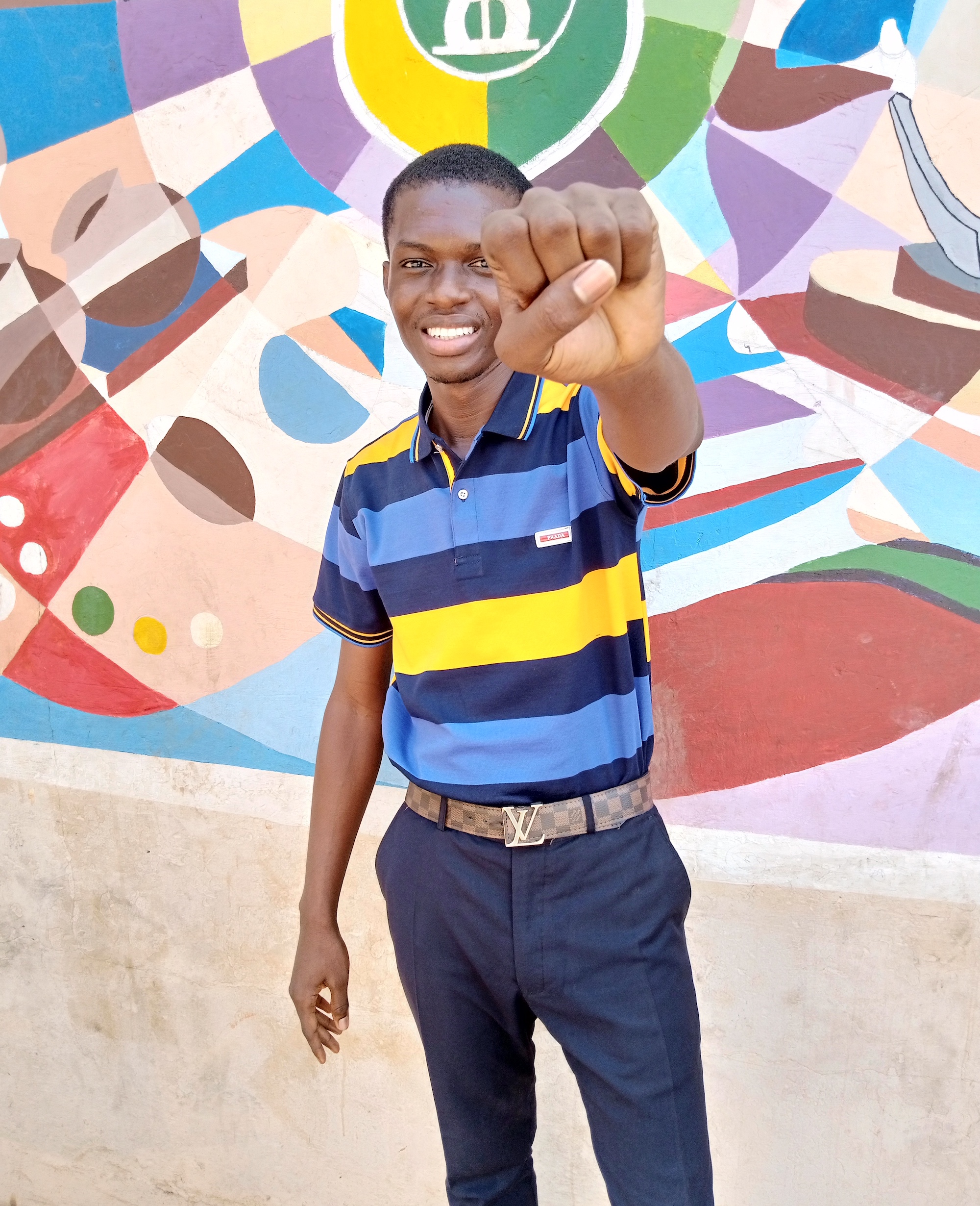‘Inspirations and Aspirations’: from marquetry to the avant-garde | Kumasi, Ghana
Ghanaian artist, Sintim Isaac talks with Emergent Art Space about his development as an artist, the ideas and techniques embedded in his work, as well as the aims of his work and dreams for the future.

Welcome to Emergent Art Space, Sintim! Which region of Ghana are you from, and where do you live and work now?
I am from Adansi Asokwa a district in Ashanti Region, Ghana. I now stay and work in Kumasi, a place called Moshie Zongo.
Tell us about your process of learning and development. What inspired you?
I inherited my artistic genes from my mom and dad who are both artists. My dad was a wood maker and my mom was a seamstress. My early art-making inspirations came from Tom & Jerry cartoon illustrations and Picasso, whose work I first saw in the film Titanic. When creative art was introduced into our school system, my teacher saw my interest and he pushed it. He showed us how to be exploratory with shading using a variety of media. I still have some of the paintings of shadings I made then. Nowadays, when I look at it, I laugh, but this is what shaped me into who I am becoming and the art that I am doing now.
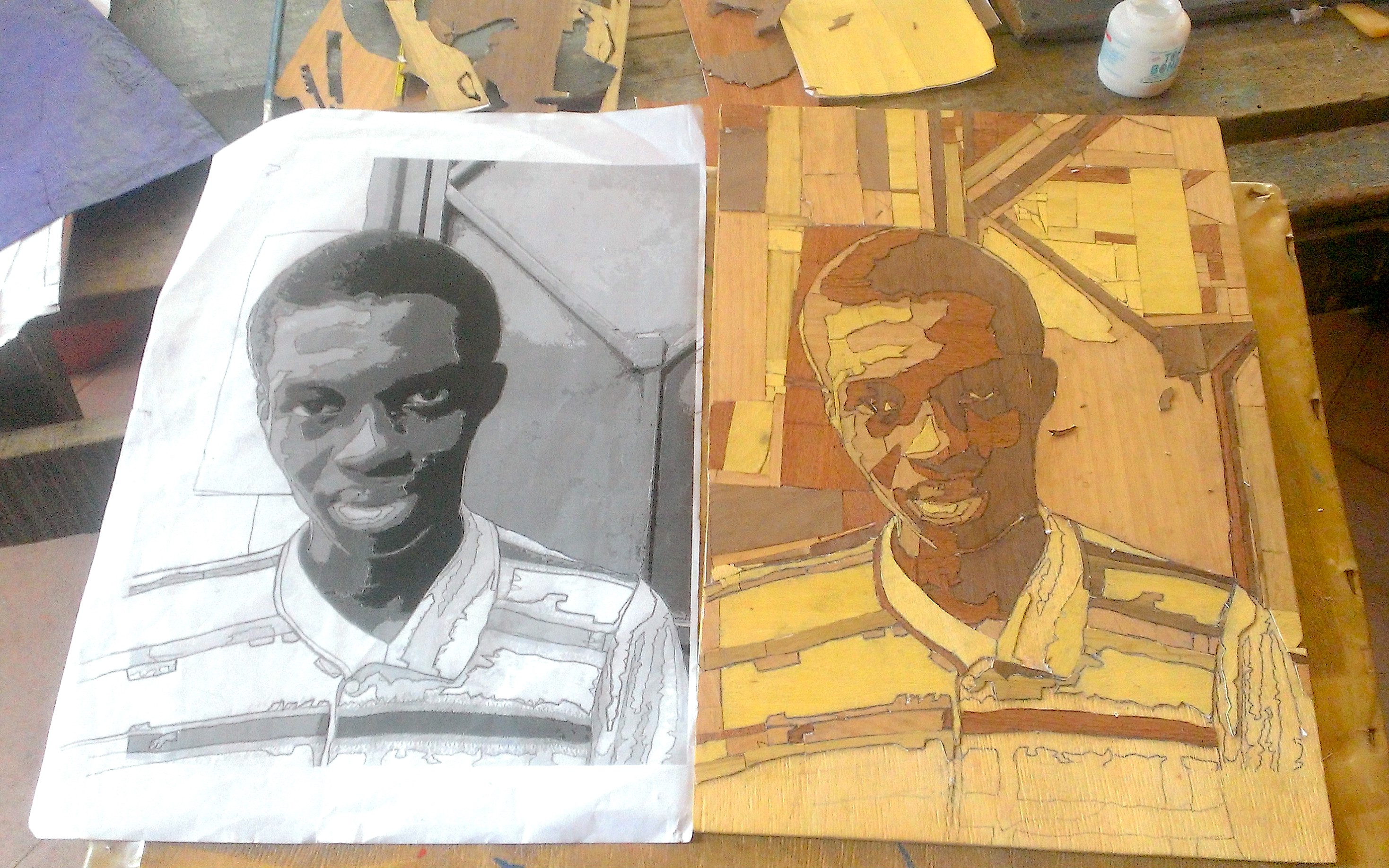
At the secondary school level, I studied the elements and principles of design. Every Friday my teacher would give us a picture of a drawing, make us reproduce it and turn it in on Monday. I developed my artistic practice through the reproduction of artworks. I began to understand how artists went about producing their art.
Another inspiration was my sculpture tutor from the University of Education, Winneba, Madam Selasie Awusi Sosu (Venice Biennale participating artist, Ghana 2019).
She trained us to be renaissance men, encouraging and reminding us how important it is to develop well-written artist statements and biographies.
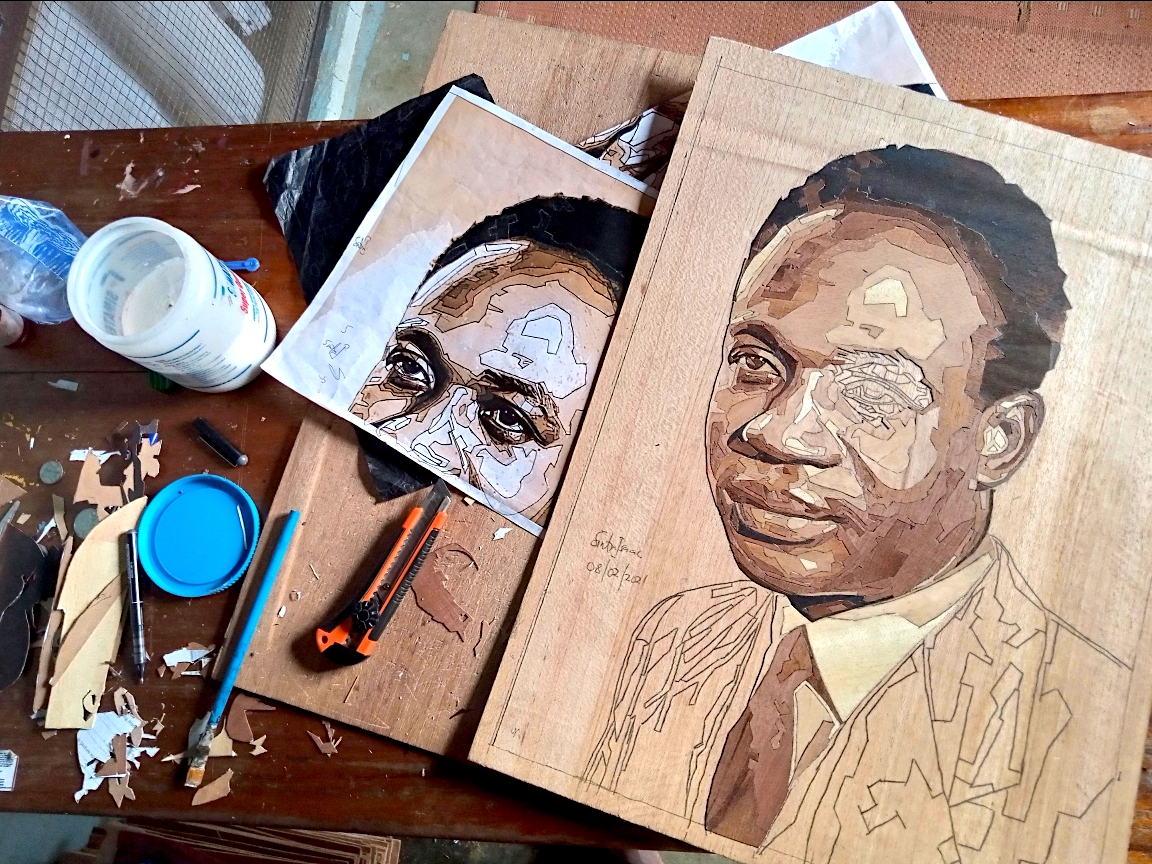
Tell us about the artworks you create, the marquetry process and how you developed this technique.
Anytime I read the starting story of an artist or an art movement, there is one thing in particular that I notice--at each stage of the movement, there is something unique about the artwork being produced. My whole view was--I have to get something that will represent me so that when people see it, they will say ‘Oh, this is Sintim’s work’.

At the University Of Education, Winneba, my picture-making lecturer Mr.Theophilus Mensah introduced various techniques. When we got to marquetry [inlaid work made with small pieces of variously colored wood], he said we should produce a self-portrait. After I produced my portrait, he made a comment, ‘I’ve never seen anyone, in my years of teaching in the university art department, produce marquetry in this style before; so you have to keep this work in this school’. I remember thinking that I was getting close to what I always wanted to achieve--developing an identity within an artform.
During the second semester, we were asked to produce works in dry media. I decided to do marquetry, to explore the medium more. I produced six works, but I was supposed to produce eight works. We assembled the work in front of our department for comments, judgements and remarks. I was very scared to showcase my work because I hadn’t reached the amount of work that I was supposed to produce. I remember asking my roommate to assemble my work, while I hid somewhere. When the teacher asked who the works belonged to, I came out from where I was hiding. He said ‘Are these yours?’ I said ‘yes’ and he said, ‘ah! These are very exquisite marquetry works that you produced.’ Suddenly, all my fear just vanished. Everyone was commenting and some people were taking pictures. After class, the lecturer, who was responsible for helping me to develop this interest, framed one of my works and hung it in his office. Six of my works are now with him.

At this stage, I studied and practiced to expand my skill and get more knowledge, so that I could better the work that I was doing. God being so good, everything was going well and the progress that I’ve made since then is very good.
As far as the processes involved in my work, there are various apps with posterizing options, breaking up the picture into different sets of tones. That is the type of software I use. When I get these tones, I print the pictures out and trace them. I don’t follow what the computer gives me, but it guides me. After tracing, I aim for a geometric feel while still maintaining the form. I cut my veneer and arrange pieces according to the tones I have. I glue, cut, then paste. That is the whole process. The uniqueness of my work is that I don’t follow the broken tones exactly the way the computer produced them.
My early interest in Picasso’s cubist technique influenced my work. I am aware that Picasso was influenced by and got his idea for the cubist technique from African masks. I think that the idea of breaking the image into cubes and geometric shapes makes my works look more African.
What themes and subject matter are of interest to you?
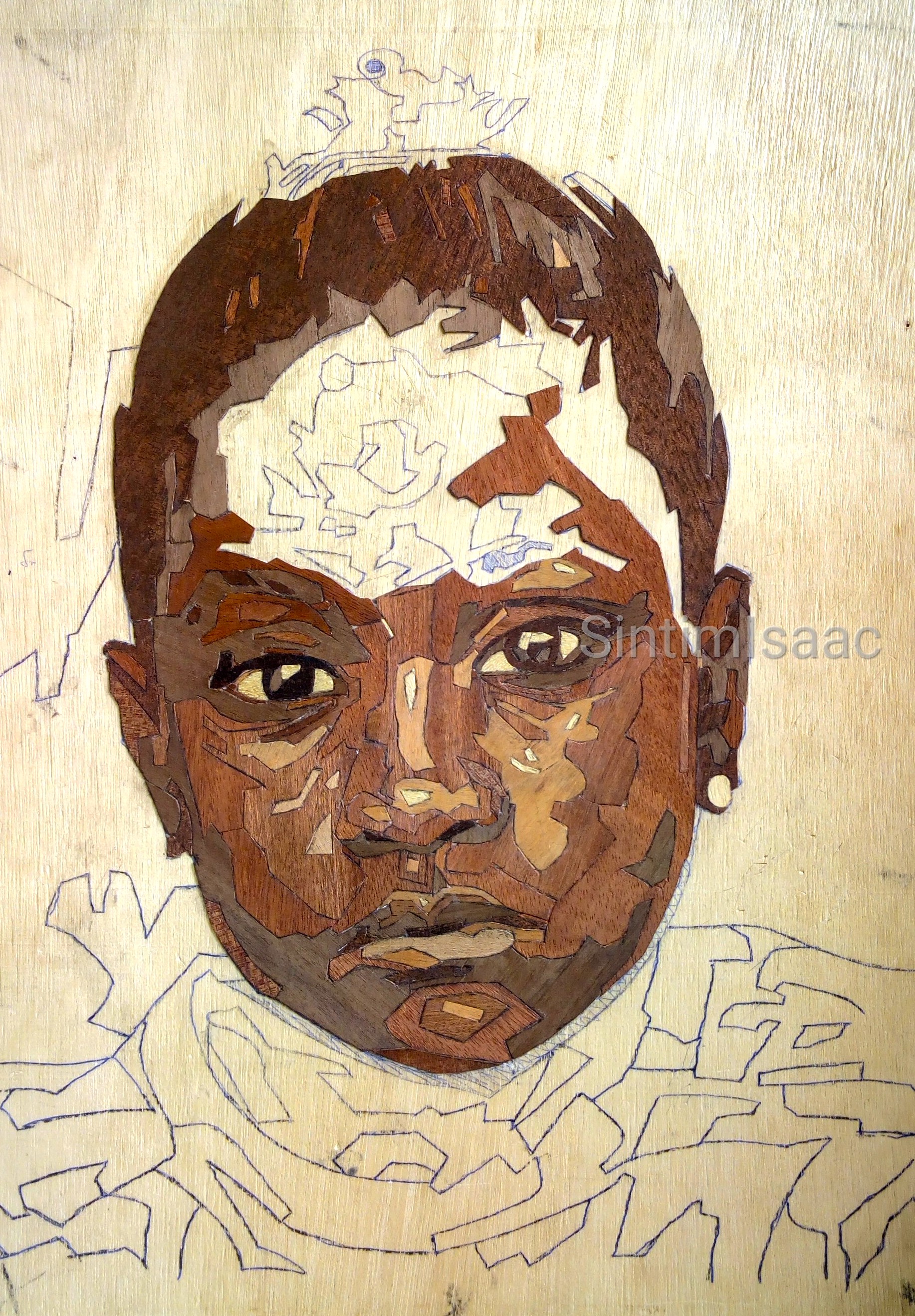 I am attracted to producing portraits and figures of children in different emotional and psychological postures. I portray children how I see them--as a solution for our future problems, because each child comes to this world with a special gift to help solve a particular problem. The question is--how are we going to nurture this child, so that what they bring to this world will be fully enjoyed by people.
I am attracted to producing portraits and figures of children in different emotional and psychological postures. I portray children how I see them--as a solution for our future problems, because each child comes to this world with a special gift to help solve a particular problem. The question is--how are we going to nurture this child, so that what they bring to this world will be fully enjoyed by people.
I want people to think about how they treat children. Something I want to draw more attention to is Ghana’s tradition: when parents give birth, there is a celebration. Children are adored from the day that they come to this world; they get wrapped with the best of material to be clothed and sleep in and are handled with care. The mood around the house changes as the child is given a huge welcome.

As time goes on, when the child is about five-years old, it seems like the earlier attention the child was given vanishes. Everything is diminished. At times you see these same kids, without clothes, shoes or proper baths, roaming about the street. Does this mean that the child is of no use or no importance anymore? This baffles me and is why I want to draw people’s attention to it.
Children need as much attention as they were given when they were infants. They need it throughout their whole life, so we can see their potential. If we don’t care, we won’t get the best from them. I sympathize with these children, the struggles they go through. The good gifts that they brought from where they came into this world will die off, and we will not see the full benefits of the gifts and the blessings they have. I try to present children as what they are--hope for the future.
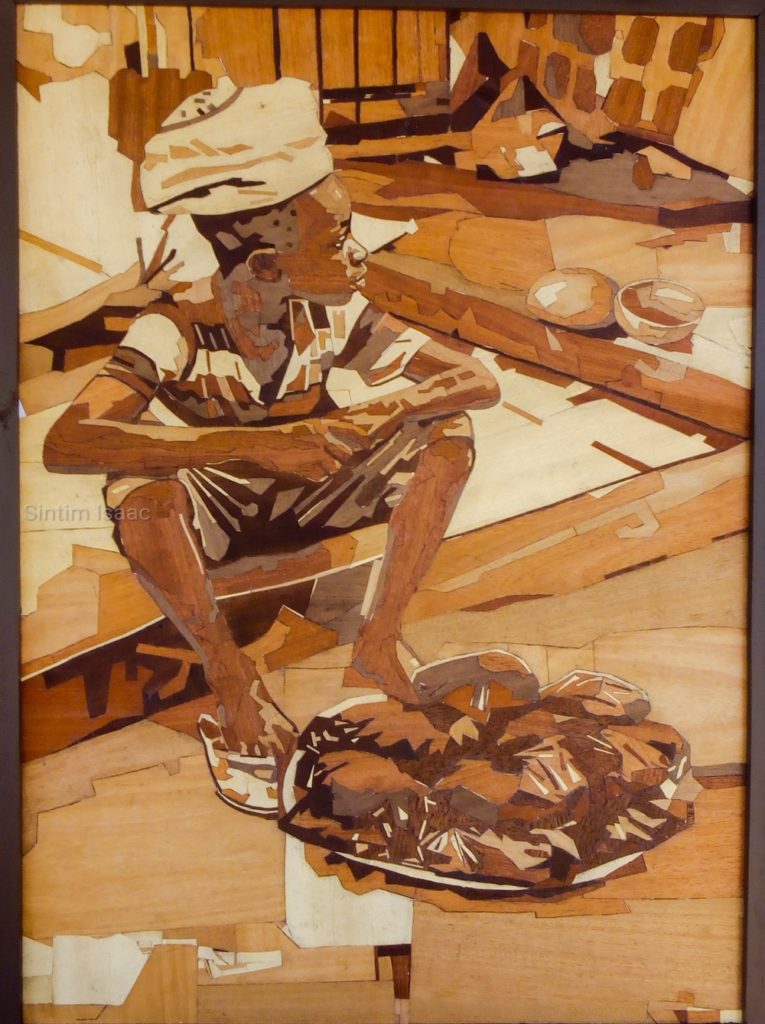
Children are therapeutic. You see them and forget your worries. This is what I try to capture. I see my artworks as an altar where people can bring their sorrows. You have your sorrows, I have mine, and then we see these children who have nothing. They have no clothes on and are hungry, but they are living their lives, moving around freely, smiling about their activities. These children are my altar and inspire my artwork.
I also want to create portraits of political figures--people who have left a footprint and need to be remembered, like the legendary Fela Kuti of Nigeria. I like his words, his music, the philosophies he stood for, the kind of Africa that he wanted for us, how he talked against bad systems. I would also like to produce portraits of people who stand for Africa, like Paul Kagame (President of Rwanda), Kwame Nkrumah (first Prime Minister and President of Ghana) and Bob Marley. I am African in the Black Lives Matter era.
The photos I use to produce some of my artworks, I get from my friends who are photographers. I am aiming to take more of my own shots and not rely on others. When you take your own shots, you know what you want to capture.
What art works or projects are you working on now?
My fullest concentration is on the national mandatory service that I'm doing, serving as a teaching assistant for a year. Although I'm not a permanent staff member, I want to leave a mark on the students before my service is over. I don’t have a lot of experience. I have not gotten to the zenith of my career. I consider myself to be at the base level. I know that I can at least teach children to get to that base level. I am searching for opportunities for them, trying to push them, and teaching them to know the value of the art that they are doing.
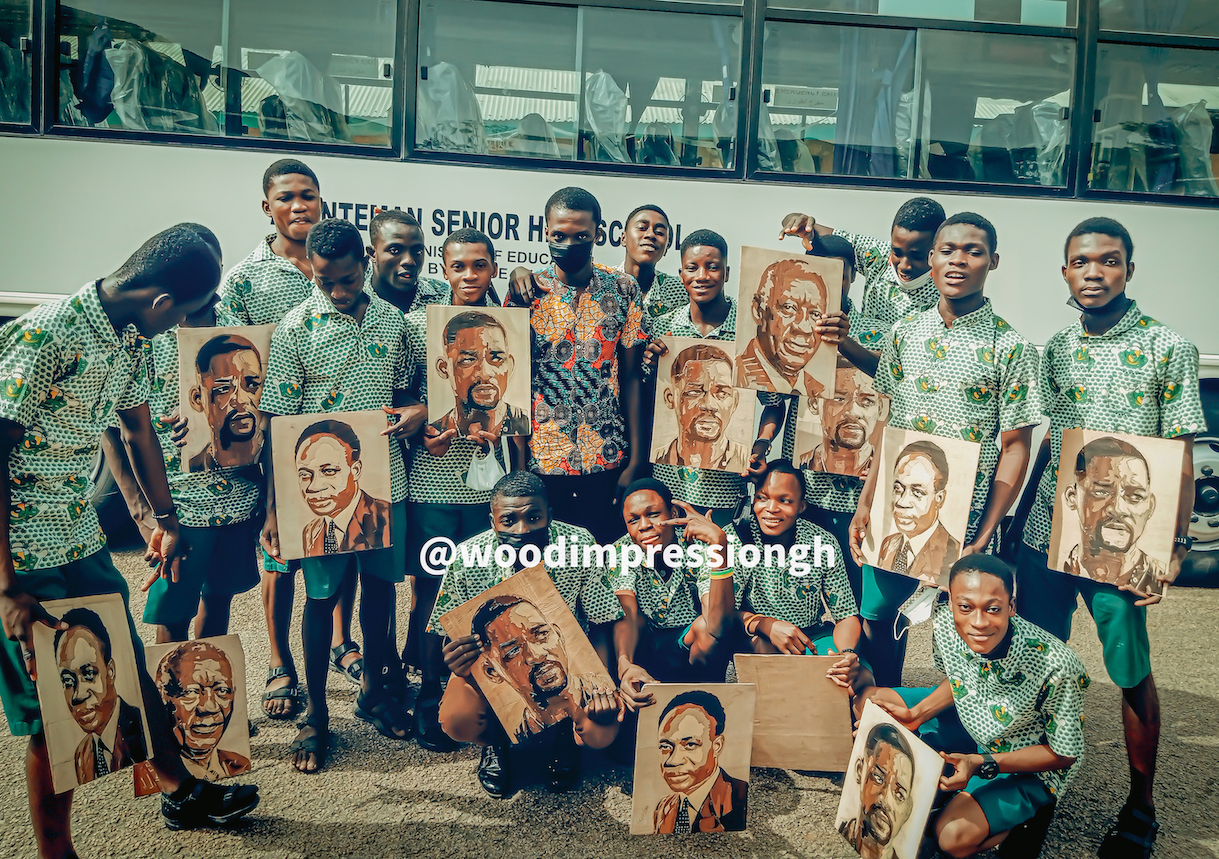
I am also working on 'Random Portraits’, a series of A3-sized marquetry portraits of friends and family. I'm hoping by the end of next year 2021, I will launch my first professional series
‘Footprints in Sand’. These will be portraits of African greats who set up a template for Africans to follow. I want to speak of their achievements and the footprints they left to look up to and apply to the betterment of Africa--the importance of Black lives, the role we have to play, how we position ourselves to become a better continent. I’m also thinking of producing a series ‘Heroes Welcomed in Vain’, about children and how they are and should be treated.
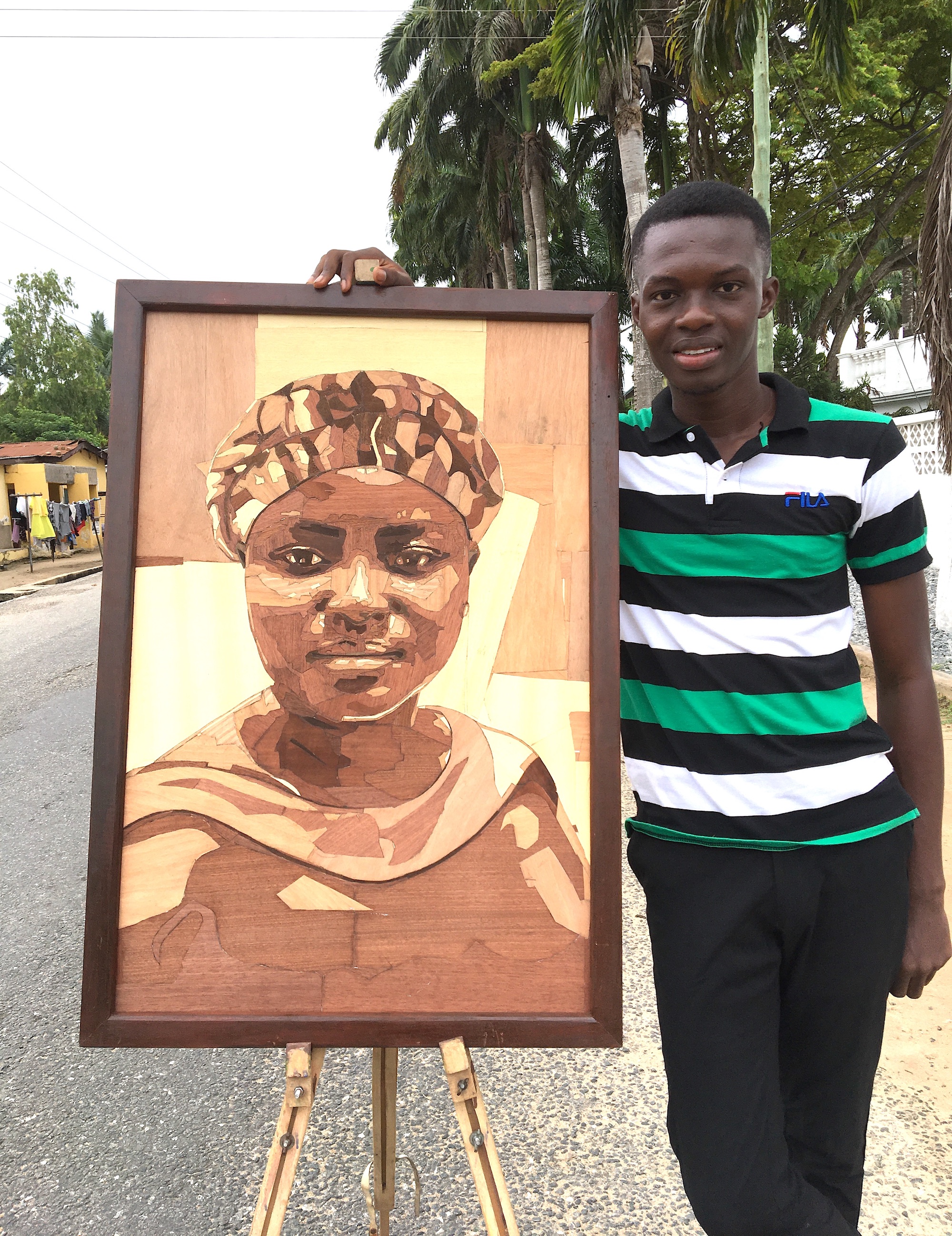
What are your dreams and plans for the future as an artist?
Now that I have my first degree, I'm searching for scholarships opportunities to advance to a Master’s degree and hopefully a Doctorate degree. I want to become a prominent artist, so that students can read and learn about my legacy. I want to push wood art to the next level here in Ghana and throughout the world, so that people will come to accept the fact that we are in a contemporary era where artists are free to produce with any medium of their choice, for self-expression shouldn’t be restricted.
Most Ghanaians do pencil and charcoal portraits and will always want to own one. Artworks from Rufai Zakari or Isshaq Ismail appear ridiculous to many. But artists like Patrick Quarm and Ibrahim Mahama are breaking the status quo with monumental installations. I want to be like them, by using unconventional materials to produce artworks and make an impact. I want to be an avant-garde artist, to start a movement where students, artists and people will come to accept the fact that there are different forms of art production. People shouldn’t look through one ‘telescope’.
I want to exhibit at places like the Venice Biennale of Italy, Art Basel, and other prominent galleries and art sites, so people can see the impact of my subjects. I dream of many things. I know some will come to pass and some will die off. I know ideas and dreams change with time. This is the structure of my dream right now. I want to leave a legacy, like Picasso and Braque. I want to see my artworks placed in Ghana, and anywhere that you pass in the world. I want to get more viewers (laughs), for people to see and get my message.
